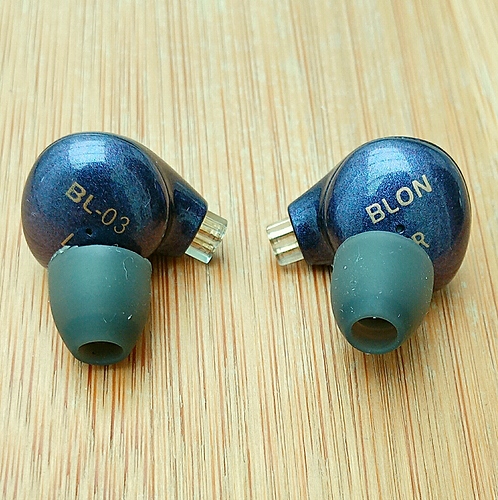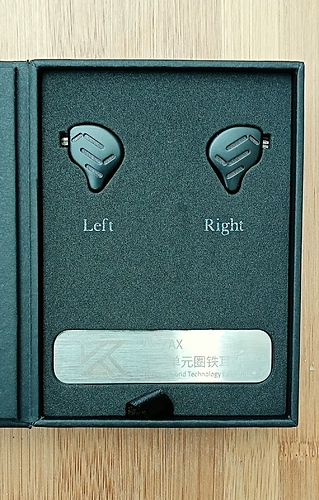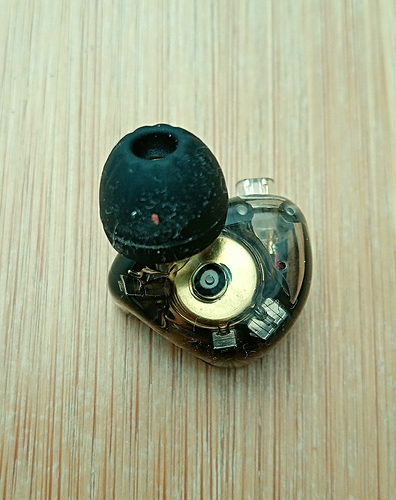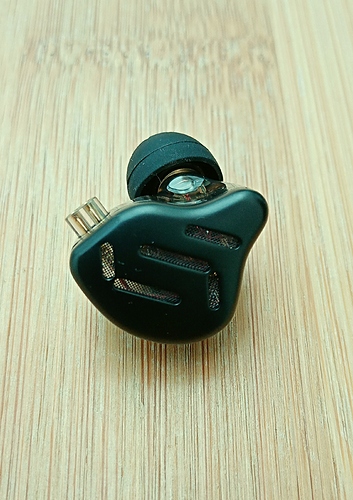KZ EDX anyone tried this very affordable set?
I was unsure whether to post this in here or in a different thread, but they do fit the theme of the thread and Hifiman IEMs don’t have their own thread as far as I am aware.
As always, this is available in Spanish on YouTube and my blog for any of the Español speaking visitors (link in my profile).
Review of the Hifiman RE-400
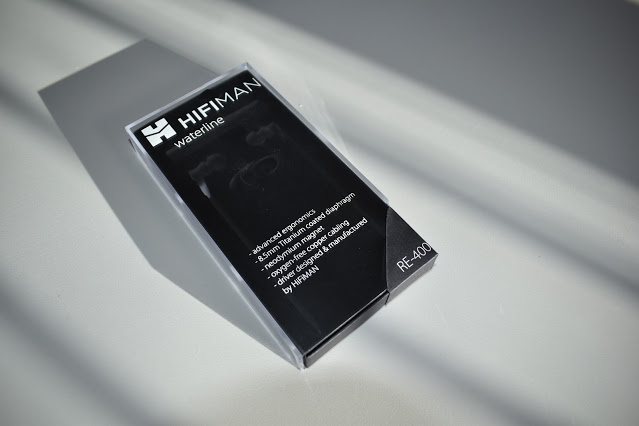
Let me start out by saying that these IEMs were kindly sent to me by Hifiman for review. I am not receiving anything in exchange for this review, nor have I received any further requests from Hifiman.
I think I have already made it clear in previous reviews but I will say it again, this review is based on my own personal opinions and my aim is to be as sincere as possible, however, it did not cost me anything to be able to test these earphones.

Intro…
To be totally honest, I did not even know these IEMs existed until they were sent to me for review, therefore I had no idea what to expect. I did do a quick search online and saw that they are available from Hifiman for $29, which puts it in competition with lots of ultra budget IEMs and places it well inside the “sub 50€” category that I like to point out on this blog.
I also saw that there are some reviews of the RE-400 stretching as far back as 2013, which means it has been around for quite a while. I didn’t actually read any of the reviews as I wanted to form my own opinion, seeing that I have received it without knowing anything about it, but I did notice that it was around $99 back then.
So, how does the Hifiman RE-400 stack up against an infinite number of low cost IEMs that are available on the market?
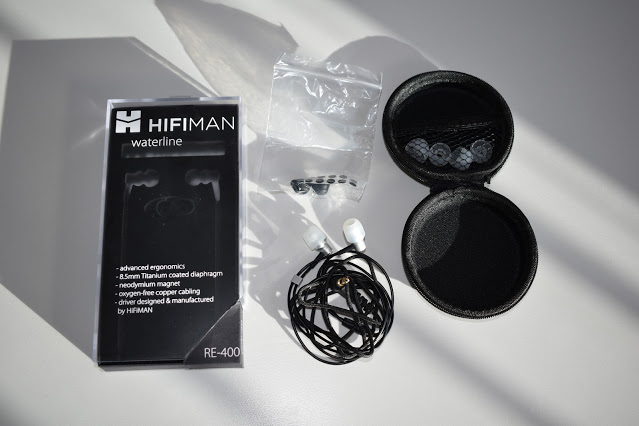
Presentation…
The box that the IEMs come in is a rather thick perspex sleeve with an internal cardboard sleeve that pulls out from the bottom. On the face of the packaging is the Hifiman logo at the top, with “waterline” written directly underneath. I had absolutely no idea what “waterline” meant, nor why it was relevant, as I saw nothing related to water in the included booklet, however, after looking at Hifiman’s site, on the RE-400 page they have the following text:
“ The Theory of Wooden Bucket
Also known as Cannikin law, indicating that the chain is only as strong as the weakest link. The wooden buckets; capacity is determined by the shortest stave. ”
So, I think that “waterline” is referring to the capacity of a wooden bucket. I am not sure why this is relevant but I found it curious.
Inside the packaging we find the IEMs, two sizes of double flange tips, two sizes of silicone tips and the instruction booklet.
Another thing I found curious was that there was also a round IEM case included, which contained another selection of silicone tips and 10 replacement filters. This case was not included inside the actual packaging of the product (there is no room in the packaging for this) but was delivered together with it. I thought that it may be because it is a review unit but it seems that these are included as standard. Again, it is a strange choice to have them included separately but is a nice addition. A case and spare filters are not something you would usually receive with a $29 set of IEMs.

Build and comfort…
Let’s start with the negative part… the cable. The cable is not detachable and is a combination of fabric covered cable as far as the split and then individual cable from the split to the actual IEMs. The quality of the cable is not great and it keeps the shape of the folds it had when packaged. I also found that when wearing the IEMs with the cable down, it caused noise in the IEMs each time something brushed against it. However, wearing the IEMs with the cable up solved this issue. The cable also has a nice little chin slider which can come in handy.
On the positive side, the IEMs themselves are very small and compact, basically disappearing inside the ears as they are not much longer than the tips themselves. I don’t have a habit of sleeping while wearing IEMs (or listening to music) but I found that I can easily lay on my side while wearing them and not notice them at all. These are a great option for those that are looking for something comfortable to sleep in.
The shell of the IEM is completely made of metal and has a simple silver finish to it. There is a small vent located at the side of the cable entry.
Although the cable is not removable, there is at least some strain relief located at the IEM end of the cable. Ath the opposite end, the cable is terminated with a 90º 3.5mm TRS connector, which also has decent strain relief.
All in all, I have no complaints with the build, other than the cable, and due to their small size they will be comfortable for almost anybody (depending on tips used).
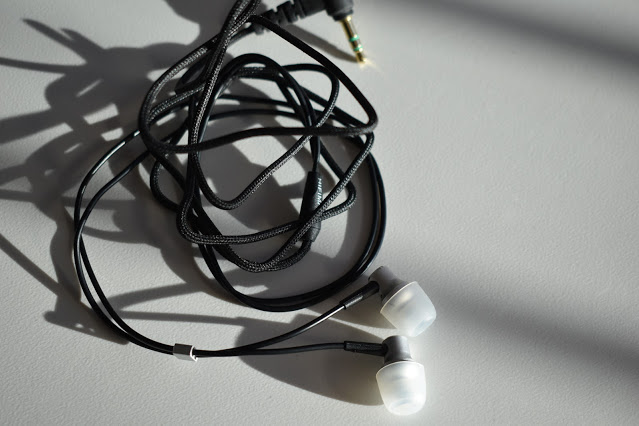
Sound…
Over the past few years, IEM sound quality has been getting better and better, almost by the day, so I didn’t have high hopes for a $29 IEM that was released 7 years ago, even if they were more expensive back then.
However, I was pleasantly surprised to find that they were nowhere near as bad as I expected.
In the bass region, the RE-400 presents us with a tuning that is not like the usual tunings found in IEMs, especially in the lower price brackets.
There is no bass boost at all, which gives the impression of lacking in bass, and maybe so, but I was surprised to find when doing a tone test that I could easily hear all the way down to 30Hz. As there is no bass elevation at all, when listening to songs that depend upon bass, such as “Sun Is Shining” by Bob Marley and Robin Schulz, the IEMs leave us feeling that it is lacking in bass.
However, when listening to songs that aren´t depending on bass, such as the acoustic version of “Perfect” by Matt Johnson, you don’t get the feeling that bass is completely missing, just that it is not overly present.
Moving from the bass into the mids, again there is no elevation, presenting a very neutral transition. Sometimes this may cause the feeling that there is a little warmth and body missing from acoustic guitars or pianos. Saying that, the resulting sound is not horrible, just different from other sound signatures that I am used to. For example, in comparison to Hifiman’s own TWS600, which was also lacking in the bass department, I find that the RE-400 is far more pleasurable.
Moving into the higher mids, the first real elevation appears around 3kHz, which gives voices a lot of presence but manages to do so without becoming shouty. In fact, I found that the mids on the RE-400 are really rather nice. I find that most voices are well presented and nicely defined.
Up in the higher registries, there is a peak somewhere around the 6kHz region which actually manages to create a good sense of definition but manages to avoid sibilance. Above this point the highs start to roll off which avoids the IEMs being piercing for such a bass light signature, however, it also lacks “air” in the higher registries which would allow it to sound a little more open.
Speaking of openness, the width of the sound stage is not very big, in fact it is quite intimate, and the placement of images is not very precise. It does give you a general sense of location but not enough to pinpoint an image.
Definition and detail is not great, there are plenty of newer offerings that provide much more detail but we do need to consider the age of these IEMs. While I could easily tell the differences between similar instruments that are playing the same passages, it is not as easy to pick up on the nuances of the way the instruments are being played.

Conclusion…
We live in a time when there are endless options in the low cost bracket of IEMs, some of which have amazing performance for their price. At the speed with which some chinese (and non-chinese) companies release new models, the RE-400 could be considered ancient. However, the fact that these IEMs are still selling, even if they are at a very reduced price, is one way of saying that they are something that has held up pretty well over the years where others have just disappeared off the map.
The RE-400 are certainly not amazing IEMs but nor are they offensive, I have heard much worse that has been released lately, admittedly not from brands with a name like Hifiman.
The overall sound signature to me is reminiscent of the Tin T2, with less definition but with better mids and less fatiguing in the higher registries. I would even say that they don’t roll off as much in the bass as the T2.
While I wouldn’t consider them a fun sound signature, I do actually find them a pleasant sound signature and would love to hear the same tuning with more detail and better overall.
They won’t be making it to the top of the sub 50€ list, however, they do place themselves above many other IEMs that I have tried. For an IEM that is over 7 years old, that is not bad at all.
Good review mate. I just purchased both the RE400 & RE600S v2, as I am quite unhappy with the sound of the GR07 mk2 (recabled, too much midbass, not much detail), and Hifiman RE262 (overhyped, weird timbre, sounds like listening through a can, vast soundstage and good imaging are it’s only saving grace, only useable for classical or gaming but needs amping). I also find the fit on the Tin T2 only bearable for about an hour.
I tried a few of the chi-fi options, but im not a fan of the designs. The CCA-16 were horribly uncomfortable to my ears and the timbre didnt quite sound coherent.
I’m hoping these two will fill my needs until I’m able to get a CIEM. I’ll probably drive up to MN to test a few of Alclair’s offerings, leaning towards the RSM or the Electro.
I started listening to the RE-600S v2 a couple of days ago and haven’t spent too much time with it yet but so far I am enjoying it.
Back in August last year I received the original BL-03 (gunmetal) for review. I appreciated its natural tonality and overall balance but was unable to obtain a secure fit. The unusual shaped tips and short nozzles proved problematic and the supplied cable with its angled connectors tended to pull the IEMs out of my ears. In addition, the very smooth and shiny finish afforded no grip and the uneven weight distribution added to the problem. Some of these issues were solved by using a replacement cable and changing the tips. However, some instability remained which impacted my ability to fully appreciate the potential of these earphones and I did not join the legion of fans singing its praises.
I have now received the latest version of the BL-03 clothed in an attractive dark purple colour. I found the new paint finish afforded more grip than the shiny metal did, and I obtained a very stable and acceptable fit and consequently an improved performance from the BL-03. Below is the amended version of my original review:
The BLON BL-03 is an IEM with a 10mm carbon nanotube (CNT) diaphragm dynamic driver. The earpieces are teardrop-shaped and finished in a highly-polished zinc alloy called “Kersite” and are finished in a dark purple colour with gold speckled accents. The build quality is impressive with a high-quality smooth finish.
It comes in a long white box with the IEMs displayed above a plain white box bearing the BLON logo and the bizarre acwronym, BELIEF – LETMUSICBURN - OPPOTY - NEVERGIVEUP. This box contains a linen-finish pouch with a blue BLON logo and the spare eartips plus some documentation.
The BL-03 features a detachable 4-core braided cable which has tightly curved ear guides and angled, shielded 2-pin connectors. I found this to be tangly and uncomfortable to wear and it tended to make the earpieces unstable. In addition, the short nozzles and unusual cone-shaped tips failed to provide a secure fit. I therefore changed the cable for a Hifi Hear 16 core cable with straight connectors and the tips were replaced by JVC Spiral Dots, large size. The fit was now snug, secure and comfortable.
The earphones were left burning in for over 100 hours before testing. During this time I found that the BL-03 benefited from extra power, so after this I used an Xduoo X20 DAP with a Fiio A5 amplifier via line out, for evaluation.
The overall profile was well-balanced with a robust bass output centred on the mid bass but still possessing good sub bass depth. There was some bass bleed but the transition to the mids was generally smooth. Timbre was very attractive and natural. The treble was nicely contoured and gently rolled off. Transient response was very good and texture was well-rendered. Layering in electronic music was especially notable. The balanced nature of this presentation suited most types of music.
Bass
The bass was on the warm side of neutral with an emphasis in the mid bass which endowed this region with a “cuddly” quality which was attractive but did dominate on some material and slightly blunted the resolution and texture. The sub bass had good impact and with a good sense of weight.
“Missing” from the album “Themes” by Vangelis, demonstrated the quality of the BL-03’s bass performance. The Greek keyboard master’s characteristic synth patches came over with impact and the drums and bass synthesiser parts in the climax possessed satisfying weight and power, but the leading edges were occasionally just a little soft.
Copland’s “Fanfare for the Common Man” is a perfect test track for evaluating bass depth and power. In the version by the Eos Orchestra conducted by Jonathan Schaffer, the bass drum showed impressive depth with the rebound of the skin being easy to discern although the initial strike could have been crisper. Timpani had excellent timbre and air which resulted in an exhilarating performance.
Mids
The midrange displayed a very natural timbre with an overall warm cast which reproduced acoustic instruments very well. There was a good deal of space which allowed directional cues to be heard clearly. Soundstage was very impressive with the stereo imaging also of high quality. In addition, the layering was very good. The detail retrieval could have been greater, however. This midrange profile has been described by some as “vintage” or “analogue” and I would agree with this description.
This showed up well in Ray Lynch’s “Tiny Geometries” from his “Deep Breakfast” album. The complex percussive elements danced across the soundstage with the synth layering and accompaniment all combining to provide a perfect backdrop for the lead melody. The whole piece displayed great coherence, no doubt the result of good single-driver implementation.
Vocal performance was impressive, too. Al Stewart’s delicate vocal style came across faithfully in “Time Passages”. The lyrics were clear and well-enunciated and the natural timbre of the acoustic guitar and sax solos provided a perfect foil for the vocal line.
Holst’s “Moorside Suite”, in a string arrangement conducted by David Lloyd-Jones, was very engaging. The principal melody line and lively counterpoint were clear and crisp and layering was beautifully portrayed. The climaxes had great immediacy with the timbre of the various string sections reproduced accurately and possessing an attractive warmth or glow.
Treble
The BL-03 produced a solid treble performance. Tonality was excellent in the lower region and remained smooth throughout. It was just a little polite with a gentle roll-off in the upper treble but even so the extension appeared very good and there were no harsh peaks. In the upper region a mild lift imparted this region with clarity and a pleasant depiction of ‘air’.
The dense electronic percussion in Isao Tomita’s “Daphnis and Chloe”, from “The Ravel Album” was a good example of this with each element separate yet well-integrated. At no time did the treble become too dominant, but the overall tonality was just a little softer than neutral.
The delicate fingering of Lavinia Meijer in her harp arrangement of Ludovico Einaudi’s “Le Onde” had a feather-light touch where the finest detail contrasted well with the fast transient attack in the more dynamic passages. The timbre of the harp was very realistic.
Conclusion
The BLON BL-03 is a very articulate single dynamic driver IEM. If a secure and comfortable fit can be obtained, it is capable of an excellent musical performance unexpected at this price level.
It is well-made, has a notable natural tonality in the midrange and an expansive, three-dimensional soundstage. It is not perfect; there is a mid bass hump and some bass bleed. There is also an occasional veiling in the mids and a roll-off in the treble which rob it of some detail. In addition, for most, the cost of a good cable and replacement tips must be factored in.
When the BL-03 was first released, it was unchallenged but it now faces stiff competition from newer single DD models such as the Tin Hifi T2 plus, BLON’s own BL-05s and the excellent Smabat NCO, all of which possess a similar natural timbre and a generally superior treble performance. However its warm, inviting tonality still marks it out as an outstanding performer in its price range and it has, quite rightly, achieved almost legendary status. Highly recommended.
This sample was provided for review by Sunny at Better Audio US via Amazon.com.
Same here. They don’t have the weird timbre the RE262 has, but it does have the same nasal midrange. An EQ fixes it fairly easily, but EQing is not very convenient for me on an IEM. I’ll give it a few weeks of burn in to see if it gets any better, but I’m not holding my breath. Love everything else about it, the imaging, soundstage and it’s fairly extended in the bass and highs without being harsh.
The best thing about them is the size. So comfortable.
I should get the RE400 today to compare.
I am actually liking the midrange on these, personally I think it is one of the strong points. However, I can understand that it depends on the music selection as the voice is very present.
I have an issue with 1k and 2k peaks, it sounds shouty and congested, kinda nasally on females and instruments/male voices sound thin. As soon as I eq that down, they sound incredible. I edit videos for work, and I wouldn’t trust the 600s to EQ voices.
I remembered when i tried the 598cs it needed an obscene amount to get that peak down, these aren’t that bad, but I am quite aware of it.
I think I’m going to keep the RE400 and return the 600, and maybe buy another 400 to leave in the car. When I was playing with the 1-2k EQ, the 400 needed half as much as the 600 to sound normal, and in some songs I couldn’t even tell if the eq was on/off. That was never the case with the 600, I always heard it.
So far I don’t think I’m missing much with the 400. They may not be as extended down low, but the imaging is just as good, but the headstage is smaller. I will say the 600 are magical for classical. It felt surreal this morning walking around the park and skateboarding with them playing some Chopin and feeling like the music was surrounding me, since I couldn’t feel them in my ear. At $30 though, the RE400 gets my nod of aproval. I could sleep with these.
Sidenote, on my MCTH, I couldnt hear any tube hiss on the 400, whereas I could on the 600. The 600 also needed very little volume (milimeters), whereas with the 400 I almost hit HE500 levels on the volume pot. Something to keep in mind if using these on a desktop amp like i occasionally will.
I’ll put my RE262 on eBay to see if anyone’s interested. I never gelled with them. The RE600 is basically a less amp-needy version of the RE262.
It’s funny, back in the Vsonic days, I also preferred the GR06 over the GR07. I so wish I hadn’t thrown my broken cabled 06 away. It did so much right. I don’t care for technicalities if the FR isn’t pleasing to my ears.
I have a GR06 in my bag of little-used IEMs. I’m pretty sure that’s the model. Copper-colored wire, square body. I think it was something like $ 75 new maybe what, 15 years ago?
Sounds about right. I was 19 so i had to buy it used for $35 haha. I’ll buy it off you now that I’m saving $70 from not keeping the RE600.
I was stupid enough to spend as much as the iem themselves cost to recable my GR07, but at the time it did a lot right. It just doesnt move me emotionally like the 06 did up until the cable broke. I ended up using them as a mono IEM until that eventually broke.
It’s in my box because I think it’s decent, even though I don’t use it often. Not sure I’d want to part with it either. Have to think about that. I wouldn’t sell it to you. At this stage in it’s life, if I decide to let it go, I’ll just give it to you. That’s not a tease. I’d probably have to listen to it again for a while to decide, and I just bought some used iSINE 20s.
Here is my review of the Hifiman RE-600S v2, as always, this review can be found in Spanish on my blog and on YouTube (links in my profile).

Let me start by saying that these IEMs were sent to me for review by Hifiman, for which I am very grateful. I have not received any requests from Hifiman except for this review and have not been asked to make any specific comments, good or bad. As always, my opinions are my own and are what I sincerely feel about the earphones in questions, however, it has not cost me anything to be able to test the RE-600S
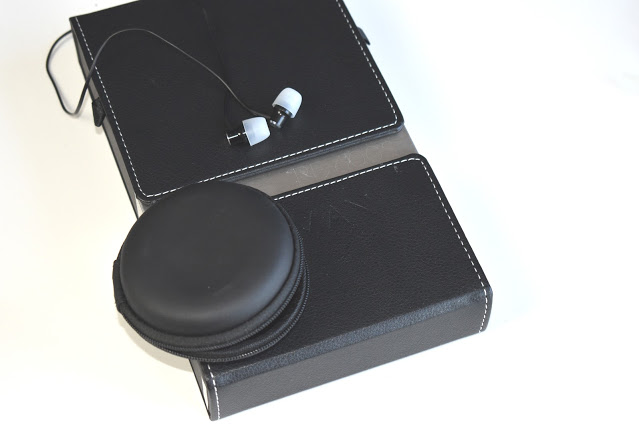
Intro…
Not long ago I received both the RE-400 and the RE-600S v2 from Hifiman. I published the review of the RE-400 here (Review - Hifiman RE-400) but I did not open or listen to the RE-600S until after I had published that review.
The reason I am saying this is because I mentioned in the RE-400 review that I knew nothing about them until I received them and I know exactly the same amount about the RE-600S, nothing, except for a quick web search that I made after putting them on for the first time.
I also mentioned in the RE-400 that I would like to try a set of IEMs with the same tuning but with improved detail and a few other things. It seems that the RE-600S are exactly that. I know this sounds like a bit too much of a coincidence, that the next Hifiman item review is basically what I asked for at the end of the last review, but I really hadn’t tried these earphones until after I published that review.
My quick web search brings me to the conclusion that these IEMs (the V2) have been available since 2017 and are a revision of the previous RE-600S, something I have never tried. Hifiman shows them on their website with a RRP of $199 but reduced to $75, that is quite a discount and while it doesn’t place them in the sub 50€ category, it does make them very affordable.
I haven’t read any of the reviews before publishing my own because I like the fact that I know nothing about them, something that is difficult when you spend any amount of time on headphone related forums and websites.

Presentation…
The box that the RE-600S are presented in is by far the nicest box I have received with any IEMs so far. The box is imitation leather, of very good quality, which has a flap that opens upwards and another that opens downwards, embossed with the Hifiman logo, separated by a steel band with RE-600S engraved on it.
Lifting the top flap we find the IEMs, located in a cut out of a velvet covered rigid piece of foam (or rubber).
The bottom flap opens to reveal 6 different kinds of silicone tips along with a cable management accessory (made of white rubber).
As with the RE-400, for some reason Hifiman ships a round carrying case alongside the main box, with another selection of tips and 10 replacement filters.
Again I find it strange to ship these separately but they are appreciated, with the case and filters being very handy.
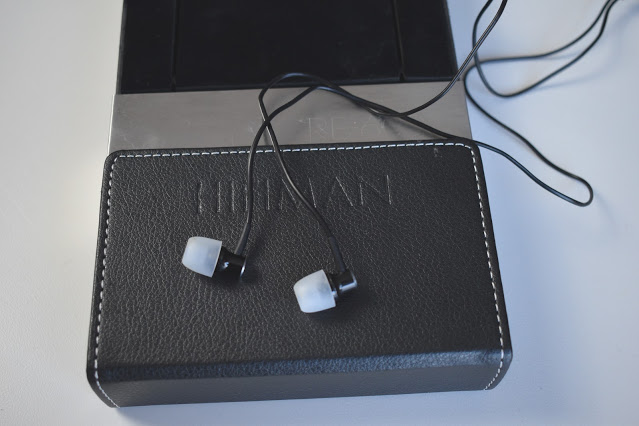
Build and comfort…
If you have read or watched my RE-400 review, these IEMs are identical, except for the RE-600S being black whereas the RE-400 were silver.
They unfortunately use the same cable also, which is fabric covered as far as the split and then 2 thin wires from the split to the IEMs. On the RE-400, this cable suffered greatly from microphonics when worn with the cable down (solved by wearing them cable up) but in the case of the RE-600S, while there are still some microphonics, they are greatly reduced in comparison to the other model.
The same chin slider is present (although black instead of silver) and the IEMs are the same small size with strain relief at both ends of the cable.
As with the RE-400, the IEMs are very comfortable due to their (tiny) size. They are almost the same size as the tips themselves (smaller than the tips if you opt for the included double flange) and disappear inside your ears. This makes laying on your side while wearing them a non-issue.
Basically these IEMs are identical to the lower priced version, at least visually, so let’s move on to how they sound.

Sound…
Now, as I said at the beginning, I mentioned in my previous review that I would like to try the same tuning as the RE-400 but with improved detail and a couple of other things. The RE-600S is literally the same tuning, at least to my ear. I haven’t seen a graph of these IEMs (as I said, I haven’t checked out any reviews) but I would guess that on a FR graph they would look almost identical. However, for any of you that haven’t seen the RE-400 review, I will give my usual impressions and descriptions.
In the sub bass department, the extension is pretty impressive, as it does not roll off until it reaches very low frequencies. As with the RE-400, I could hear a test tone quite clearly all the way down to 30Hz.
In the general bass frequencies, these are not elevated in any way in comparison to the mids, therefore, the IEMs give a sensation of missing bass with some tracks that are highly dependent upon bass and sub bass. In the case of a song like “El Cuenta Cuentos” by Nach, this track is recorded in a way where the typical V shape gives it a nice bass presence, however, as the RE-600S is much flatter, it leaves the song with a clear lack of bass in comparison to other IEMs.
What I can say is that the bass is very controlled and well defined, presenting lots of detail when listening to tracks such as “Elephants on Ices Skates” by Brian Blomberg. As this track is based around a slap bass line, this results in a very clear and detailed sound, allowing you to focus on the nuances of the bass playing.
The transition from bass to lower mids is very balanced, with no rises or drops, avoiding any kind of bass bleed from the bass range over into the mids. Again, this may result in the feeling that there is some warmth missing on certain tracks that are dependent upon bass or lower mid boosts (due to their recordings) but results in a very clean and detailed sound.
Moving through the mids, which are smooth, articulate and very pleasurable to listen to, with a slight elevation when reaching the higher mids, giving more presence to voices. Vocal tracks that are accompanied by acoustic guitars and other similar instruments are nicely presented, making the voice seem a little more forward than the instruments but without being overdone. This slight elevation around the 3k mark manages to give that extra presence without seeming shouty or overly forwards.
Again, it is possible that at times there is a feeling that there is a little warmth missing from the lower end of some string instruments or pianos, but it does not result in a bright or fragile sound, and the clarity of the instruments and voices allow you to enjoy details that are not present on many other options in similar price ranges.
Up in the higher registries, the RE-600S manages to avoid sibilance for the most part without being overly dull. There is slightly more sibilance than the RE-400 but at the same time, there is also a better sensation of air and clarity. The highs I find to be pleasant and while they do roll off, they don’t leave me feeling that they are lacking in highs.
As a usual sibilance test, “Code Cool” by Patricia Barber is very listenable as is “Hope Is a Dangerous Thing” by Lana Del Rey, proving that there isn’t excessive sibilance, as both of these songs can become unpleasant fairly quickly.
As far as details and speed, here is where I find the RE-600S to be a clear improvement over the RE-400. In busy songs such as “The Room” by Ostura, they hold together well and don’t seem to fall apart when tracks get busier.
The sound stage width and imaging is more than acceptable. The width does seem to be improved over the RE-400, not as intimate as the lower priced alternative, but is still not excessively wide. I will point out again, as I have in many reviews, that I haven’t really come across a set of IEMs that I consider to be wide. The RE-600S are not the widest IEMs I have tried but are above average. Imaging is decent, with a better sense of transition than on the RE-400, and while they are still not able to pinpoint to the mm, they do a very good job of placing instruments and sounds, as is proven by listening to “Letter” by Yosi Horikawa.
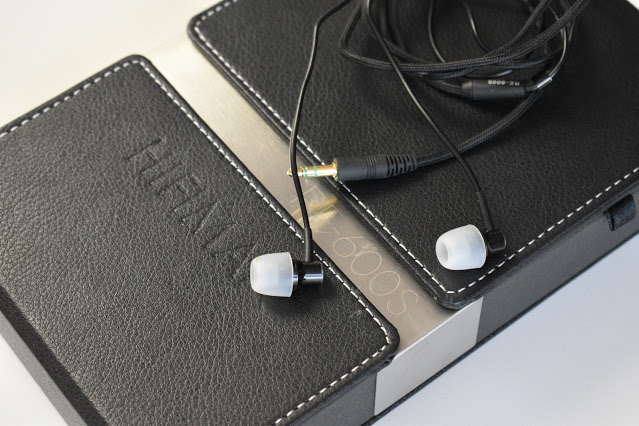
Conclusion…
I feel that these IEMs are what I was asking for when I mentioned that I would like to try the tuning of the RE-400 with better detail and resolution. The RE-600S maintain the same overall sound signature but improve on things like speed, detail, sound stage and imaging.
There is still a feeling, depending mainly on music choice, that there is a lack of bass at times but that stems from being used to an elevation in the bass department on most IEMs.
I find the mids to be very pleasurable, with smooth treble that really doesn’t become harsh at all, especially for an IEM that I don’t consider to be warm.
The size and shape of the RE-600S makes it extremely comfortable and if it wasn’t for the cable, I would say that build and comfort are excellent.
To be totally honest, while they are not my favourite sound signature for all kinds of music, they are earphones that make voice centered music, such as “Hallelujah” by Pentatonix, a very pleasant experience.
Due to their good mids and general sound signature, they also make voices very intelligible and if the cable were interchangeable, they would make a great option for calls and video conferences.
All in all, I feel that the Hifiman RE-600S v2 at the current price of $75 is something that is well worth the price. Yes, there are improvements that could be made and the signature is not for everyone, but they are not offensive in any way and I have enjoyed listening to them over the past week or so.
Another great review @SenyorC. Very detailed and easy to follow.
Thank you for your kind words as always!
Thanks - I enjoyed reading about your experience with the RE600S v2. I own a number of IEMs now, but I keep finding myself with these in my ears. That cable might even be softening up a bit over time! 
Here is my review of the KZ ZAX, as always, it is available in Spanish on my blog and on YouTube (links in my profile).

I have to start this review by saying that the KZ ZAX have been sent to me free of charge by EE Audio, a seller on amazon.es (I believe they are also on amazon.co.uk and maybe other European Amazon sites). The only request I have received from them is that I include the Amazon link to this product in my YouTube review. I have not been asked to write anything positive or negative, nor have any other requests been made, however, as always, I like to be transparent and point out that I have received this unit free of charge and do not need to return it.
I will aim to be as impartial as always in my review, but it is only fair that you are aware that this item has not cost me anything. Also, although the only request from EE Audio has been that I include the sale link in my YouTube review, I will also include it in my written reviews (both in Spanish and English) on the Acho Reviews blog.
If you are reading this review on a forum or elsewhere, you can visit the review on the blog to see the link by clicking here: Acho Reviews - KZ ZAX
I do not receive anything in exchange for any purchases that are made through that link, nor is the link associated with me in any way (I am not an Amazon affiliate etc.).
So, after all that, let’s get on with the important bit, the KZ ZAX.

Presentation…
The presentation of the ZAX is a bit of a break from the normal KZ presentations. Usually KZ IEMs appear in a simple white box, in this case they have opted for a black box with a lid that opens to the left.
Opening the box greets us with the IEMs located in a foam cut out, with Left and Right printed underneath. At the bottom of the foam piece there is a metal plaque with the KZ logo embossed on it, along with “KZ ZAX”, a phrase in chinese (that I have no idea what it says) and “16 Units Hybrid Technology Earphone” underneath.
On the inside of the flap that opened there is a phrase that I have noticed for the first time on KZ packaging and would be handy for a lot of people to remember: “Don’t forget, the original intention of using earphone is to enjoy music”. I am not sure if this has appeared on any other KZ packaging and I have missed it, but I do think it is the most sensible phrase I have read on chinese packaging lately.
Lifting the tab to remove foam insert holding the IEMs, underneath there is the typical warranty card and instruction booklet, the cable (white in my case, with a microphone) and two additional sizes of silicone tips. This is not a lot of content in a set of 70€ earphones (at the time of writing this) in comparison to others that I have reviewed recently by brands such as Hifiman or Urbanfun, but if the quality is good then I am not going to complain about case candy.
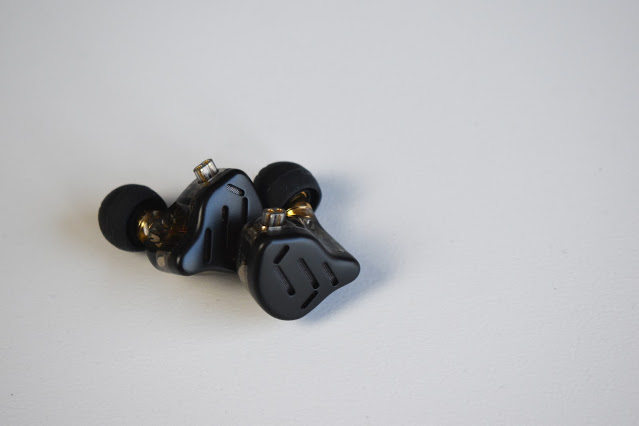
Build, aesthetics and comfort…
The shape of the ZAX is no different to so many other KZ models, nor is it radically different as far as aesthetics, except for the back plate.
The body of the IEM is the usual tinted but transparent resin, allowing the insides to be seen. The connector is again the usual protruding (type C?) connector that KZ have been using for a long time now (well, a long time by KZ standards) and the nozzle seems to be the same as others that I have tried over the past year or so.
As I say, the only visible change is with the backplate which, instead of being a solid plate, has grooves in it with meshing underneath, giving it an open back look.
I say open back “look” as the IEMs are nowhere near as open as the aesthetics would lead to believe, however, there is at least some kind of vent located underneath the plate as a slight blow through the mesh leads to hearing the driver flex, meaning that air is getting from the backplate to the drive (this is certainly not something I suggest anyone does, I just did it to see if it really did have any openness to it).
The included cable is the typical KZ cable and is identical to all other cables included with KZ products currently, with plastic connectors on each end. In my case the cable has an inline microphone and although it is not the best mic in the world, it is sufficient to have calls without the other person complaining. The cable is not the best but it is sufficient and does its job, there are far worse cables included with other products costing the same or more.
As far as comfort, well, it’s a KZ. If you have tried any of the KZ with this shape, such as the ZSN, ZSN Pro, ZSN X, ZS10 Pro etc. then you will know how they fit. In my case I find them comfortable enough for daily use, although they are not my favourite. If you have never tried a KZ in this shape, you can pick up a ZSN for less than 10€ and give them a try (and the ZSN is not a bad IEM for that price!).
As I have said, the build is no different to any other KZ and I haven’t had a KZ fail on me yet in the last two years or so. That doesn’t mean that they won’t break, it just means that with me personally, they have a good track record so far.

Sound…
KZ seems to release new models every week and a search of KZ earphones will bring back dozens of models to choose from. Some of these are as cheap as 7€ and others, such as the ZAX, are ten times that price. While these would all be considered budget IEMs, the ZAX certainly aims to the higher end of their line up, it could even be classed as their “flagship” model. Therefore, we should expect a decent result from these IEMs.
In the bass category, there is plenty of extension down into the sub bass rumble area but it is not overly boosted. The bass is enough to feel the lowest of notes on tracks like “No Mercy” by Gustavo Santaolalla or “Bury a Friend” by Billie Eilish, but it doesn’t overpower everything like in certain other KZ models.
Kick drums and bass lines are held nicely together, not feeling loose and offering a very realistic timbre in the lower regions. Songs that have double bass to fill up their low end may feel a little overly present on occasions but electric bass guitars fit in quite nicely. In the case of electronic music, the bass has a decent rumble but without losing control and definition, keeping the “hit” intact, such as with songs like “Shot Me Down” by David Guetta.
In the lower mids, there isn’t really bass bleed as such, it is more of a ramp down from the bass that continues up to somewhere in the center of the mids, where it starts to ramp up again.
The V shape in the mids, between the low and higher end of the mids, is not overly pronounced but it can sometimes leave certain voices feeling lacking in the foundation of them. The ramp up to the presence area (around 3k) is steeper than the drop down from the lows, this does help with presence to some degree but voices that are over bass heavy backing tracks will sometimes seem a little overshadowed.
Vocal tracks that have plenty in the lower registries of vocals but don’t have any overpowering bass instruments are presented very nicely, such as “These Bones” by The Fairfield Four. I think the mids suffer more when vocals are backed by electronic music, when this is heavy on bass.
Up in the higher frequencies, there is little presence of sibilance on tracks that are more propense to it, such as “Code Cool” by Patricia Barber. It is not unbearable sibilance but does get a little harsh on occasions.
As we get higher, there isn’t really a noticeable drop off in the treble until it is past the 14k mark, which allows the ZAX to present plenty of air and openness, which is something that is appreciated. I certainly don’t find myself wanting for more treble but I also don’t find it overly bright except for that slight peak in sibilance, which I would rather tame down a little.
In the detail and definition category, I would say that these are the most detailed KZ IEMs I have heard so far. They are not miles better than the ZS10 Pro, my reference for detail as far as KZ, but they are noticeably better. They also don’t exhibit as much of the metallic ring that the ZS10 Pro does, something which is appreciated.
They are also one of the widest soundstages I have heard in an IEM, certainly the widest from KZ, and the placement of images is very well defined. I was listening to “Bubbles” by Yoshi Horikawa and both the soundstage and imaging was way superior to the ZS10 Pro, in fact, it felt superior to almost all budget IEMs I have reviewed so far.
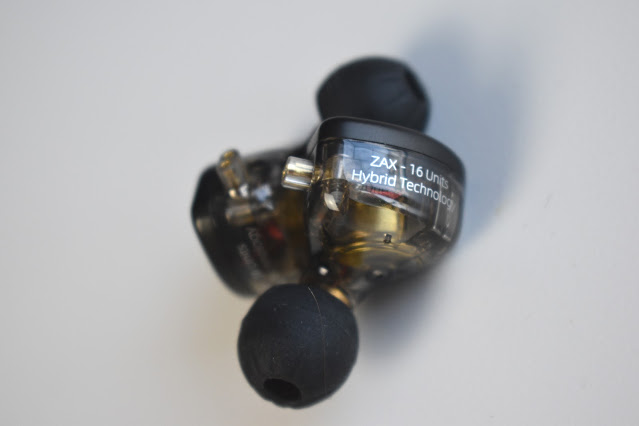
Conclusion…
Until now, my favourite KZ offering was the ZS10 Pro, an IEM that takes well to EQ (and needs a little to sound it’s best) and has great detail for a sub 50€ IEM. The ZAX is a step up from the ZS10 Pro and, while it could still do with a little tweaking in the EQ department, has replaced the latter as my preferred KZ.
Admittedly I haven’t tried all KZ offerings (I don’t think I have even seen photos of all KZ offerings) and there are models such as the ZSX that I have not heard, therefore I cannot say that the ZAX is the best KZ to date. I will, however, say that the ZAX is the best KZ offering I have heard personally so far.
It is over the 50€ price that I limit the “ultra budget” category to on the blog, which means it cannot replace the Tin T2 Plus as my favourite under 50€ IEM, but I am sure that in the near future we will see prices dropping slightly on the ZAX and it may even fall into that category. With this I am not saying that it is superior to the T2 Plus but it does offer certain things that the T2 Plus doesn’t, such as the spaciousness. I would have to do a lot of side by side listening to come out with a preference from the two but the ZAX would certainly rank high on the list!
At the current standings, it competes with the YBF-ISS014 and I feel that the ZAX is a better deal in the sound department than the YBF.
As I said, I received this unit for free so it wouldn’t really be fair for me to say if it is worth its price but I have purchased plenty of other IEMs at similar prices that I feel are inferior to this model. I am liking what I hear from the ZAX.
I have been evaluating KZ’s latest multi-hybrid, the ZAX and here is my opinion of it. This unit was supplied by Sherry from EEAudio at Amazon.co.uk. Product link: https://www.amazon.co.uk/Monitor-Musician-Headphone-Detachable-Earphone-Black/dp/B08H1VWJQF/
KZ described their last multi-driver earphone, the ZSX, as the “Terminator of the hybrid line”, so it was a surprise when the new ZAX was announced, although CCA had recently released their CA16 16 driver model, and often KZ and CCA release similar models in short order.
The ZAX is an 8 driver per channel hybrid design. Bass frequencies are handled by a 10mm dual magnet dynamic driver with a composite diaphragm. A total of seven balanced armatures cover the rest of the range: two 30019 units for the midrange, two 50024 dual BAs (four in total) for the mid/high region and one 30095 armature (placed within the nozzle) for the highest frequencies.
The ZAX comes packaged in a similar way to former premium KZ models in a grey box which opens like a book. The IEMs are nestled in a foam insert above a metal nameplate inscribed with the model number. Below this you will find the 2-pin silver plated copper cable, spare eartips and documentation.
The IEMs have a clear resin body and a zinc alloy faceplate which has five slot-shaped vents on its surface. My particular sample was finished in a matt black. It has a kind of “stealth” look, and is really cool. The words “ZAX - 16 units Hybrid Technology” are written on the side of the casing and there is a small pinhole vent on the inner surface. The nozzle is coloured gold and has a useful lip to secure the tips, and there is a silver mesh on the nozzle.
The cable has clear plastic QDC connectors and Y-split and a 90° angled 3.5mm plug. It is a silver-plated 4-core copper braided type and there is no chin slider.
The ZAX was tested initially using the supplied cable and pre-fitted tips and the fit was comfortable with good isolation. The source was an Xduoo X20 DAP and a period of 100 hours of burn in was carried out before evaluation.
First Impressions
The ZAX produced a big, bold and expansive sound with solid, well-textured bass, present mids and extended treble. Volume was adequate with no need for additional amplification. The soundstage was extensive in all three dimensions and the overall character resembled that of the ZS10 Pro but it was not as recessed in the mids and there was improved detail retrieval. After a short test I replaced the supplied cable with a silver plated balanced cable run from the 2.5mm output of my Xduoo X20. This resulted in improvements in all areas and the following observations were made with this configuration.
Bass
The bass was extended, firm and nicely textured with good resolution. It was mildly elevated in the sub bass, blending into the mid bass which was also somewhat north of neutral, slightly colouring the mids but producing an attractive “bloom”. Decay was natural, allowing recorded ambience to be heard authentically.
The tonality of the bass section of the orchestra in the slow movement of Holst’s “Moorside Suite” arranged for strings, was accurately reproduced. In the sensitive performance by the Northern Sinfonia under David Lloyd-Jones, the rich woody timbre of the basses formed a perfect support for the beautiful thoughtful melody in the upper strings.
The powerful tom-tom strikes and bass drum in the climax of “Private Investigations” by Dire Straits had impressive impact and decay. Set against the superb acoustic guitar solo and accompaniment, the effect was dramatic and powerful with dark silences in between.
The introduction to “Flame Nebula” from Kevin Kendle’s “Light from Orion” displayed superb sub-bass extension and rumble, providing a solid foundation for the swirling synth figurations and special effects in this evocative piece of space music from one of England’s best electronic artists.
Mids
The ZAX’s mids were more present than expected and possessed excellent detail. The lower mids were slightly warm as a result of a little bass bleed and gradually became brighter towards the treble boundary. The timbre was very good for BAs, being just a tad brighter than neutral.
The clarity of the breath and lip sounds and edge harmonics on the flute in George Deuter’s “Mirage” from the album of the same name, demonstrated the ZAX’s excellent handling of micro-detail. Accompanied by gentle synthesiser and sparkling percussion effects, the whole piece came together very well.
The timbre of the cello in “Pygmalion” by Andreas Vollenweider from his latest album, “Quiet Places” was very natural with good transient attack on the leading edges and Vollenweider’s trademark electric harp accompaniment complemented the solo instrument with its bright resonant tones, with the harp’s decay and harmonics particularly well rendered.
“Adios” is a romantic ballad by Linda Ronstadt from the album “Cry like a rainstorm, howl like the Wind”. Her clear voice and perfect diction came over very effectively on the ZAX, preserving the emotional message in the lyrics. The lead vocal was nicely balanced with the backing vocals and arrangement in a spacious acoustic.
Treble
The treble on the ZAX was surprisingly extended and generally free of disturbing peaks, given that the sole treble BA was placed within the nozzle. Detail retrieval was high and separation very good.
The bright sparkling riff behind the production of Richard Souther’s “On the Third Day” from his album “Heirborne” was airy and open and supported by smooth synth patches and expressive solo voices. The clarity and attack in this superb recording was a joy to hear on the ZAX and was extremely entertaining. I ended up listening to the whole album, which is testament to the quality of the sound.
The Unanswered Question" is a modern orchestral piece by Charles Ives. In the beautiful interpretation by the New York Philharmonic under Leonard Bernstein, the serene and yet slightly unsettling orchestral backdrop was punctuated by incisive woodwind tone clusters which cut through the atmosphere in a very dramatic fashion. The trumpet solo hovered in the air and possessed good definition and space and the clean treble delivery and separation of the ZAX conveyed the composer’s message admirably.
Isao Tomita’s “Electronic Realisations” of well-known classical works always cover the whole frequency gamut and display a powerful dynamic range. “The Old Castle” from Mussorgsky’s “Pictures at an Exhibition” is no exception. From the beginning there was a wealth of information, especially in the treble, and the ZAX made the most of this with copious detail on offer with impressive separation and clarity. The 30095 BA has certainly been well-tuned here and there was good extension with little or no harshness, despite the bright nature of the recording.
Soundstage
The ZAX’s staging was very impressive, being expansive in all dimensions. Imaging and separation were precise and movement was very well handled.
The various elements in “Elsewhere” by Vangelis from the “Direct” album occupied every square inch of the soundstage, which resembled a vast dome with the solo voice located high in the image and electronic sounds dancing around in complex patterns. The excellent portrayal of the reverberation and ambience added to the effect. Climaxes were effective with an impressive dynamic range.
Mark Dwane’s brand of electronic music is based on MIDI guitar synthesisers and is always recorded in audiophile quality. “I remember you from Tomorrow”, from his latest album, “Future Tense” features incisive electric guitar and smooth sax solos floating over the top of broad synth washes presented in a wide, spacious manner. The ZAX produced an exciting and satisfying rendition which displayed all the atmosphere of the piece and retained its character perfectly.
The orchestral transcription of Debussy’s “The Engulfed Cathedral” received a brilliant reading from the LPO under Nicholas Braithwaite in a superb Lyrita recording. On the ZAX, the orchestra was laid out in a most convincing manner with all the orchestral sections occupying their correct positions in the image, both in width and depth. The sense of distance in the brass and percussion relative to the string sections was particularly notable.
Conclusion
With the ZAX, KZ have managed to retain the best qualities of earlier hybrid models while improving their shortcomings. It takes the bass of the ZS7, the fun factor of the ZS10 Pro and the balanced character of the ZSX, and adds to these improved treble extension, a more expansive soundstage and superior midrange timbre. Compared to CCA’s recent CA16, it is much brighter and clearly has the hybrid sound, whereas the CA16 almost sounds like a single DD with its warmer tonality, excellent timbre and superior driver integration.
The ZAX has an engaging V signature which is less recessed in the mids than the ZS10 Pro and is highly entertaining to listen to while having good technicalities and timbre. Definitely KZ’s best hybrid so far: It’s Terminator 2: Judgement Day!
I should have waited for these, and skipped the CCA CA16. Oops. Oh well; I still have my ZS10 Pro’s.
Great review again @Nimweth. Detailed and comprehensive as usual. Excellent.
I just posted a review of the SSR in the Moondrop thread but I will leave this link here as it fits this thread also…




